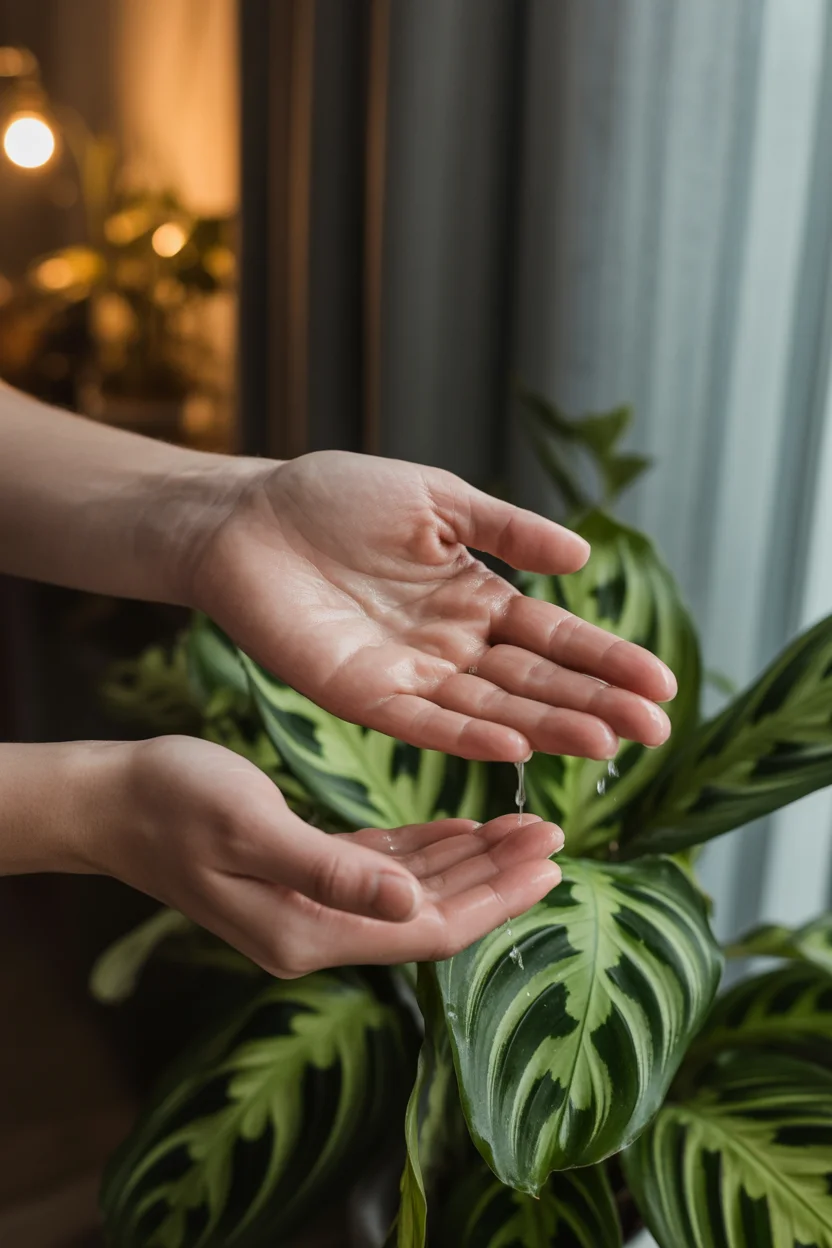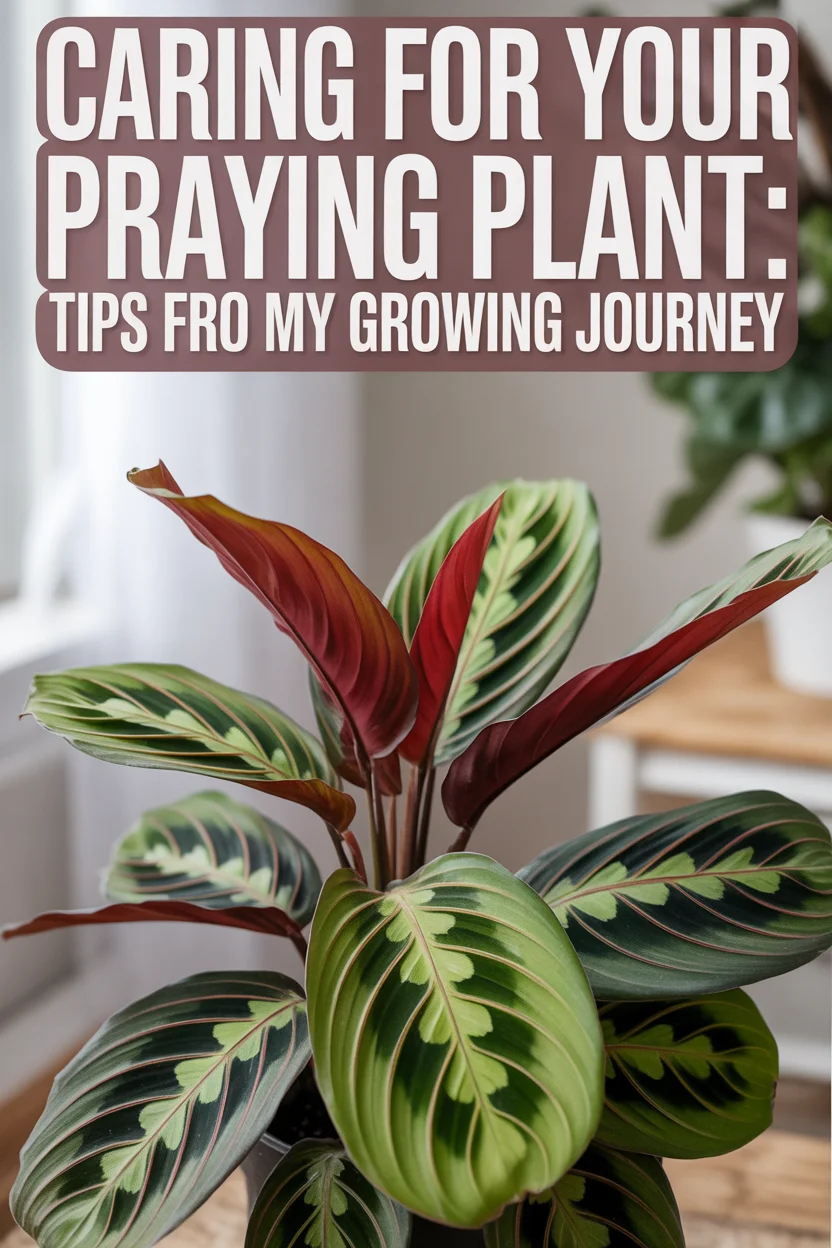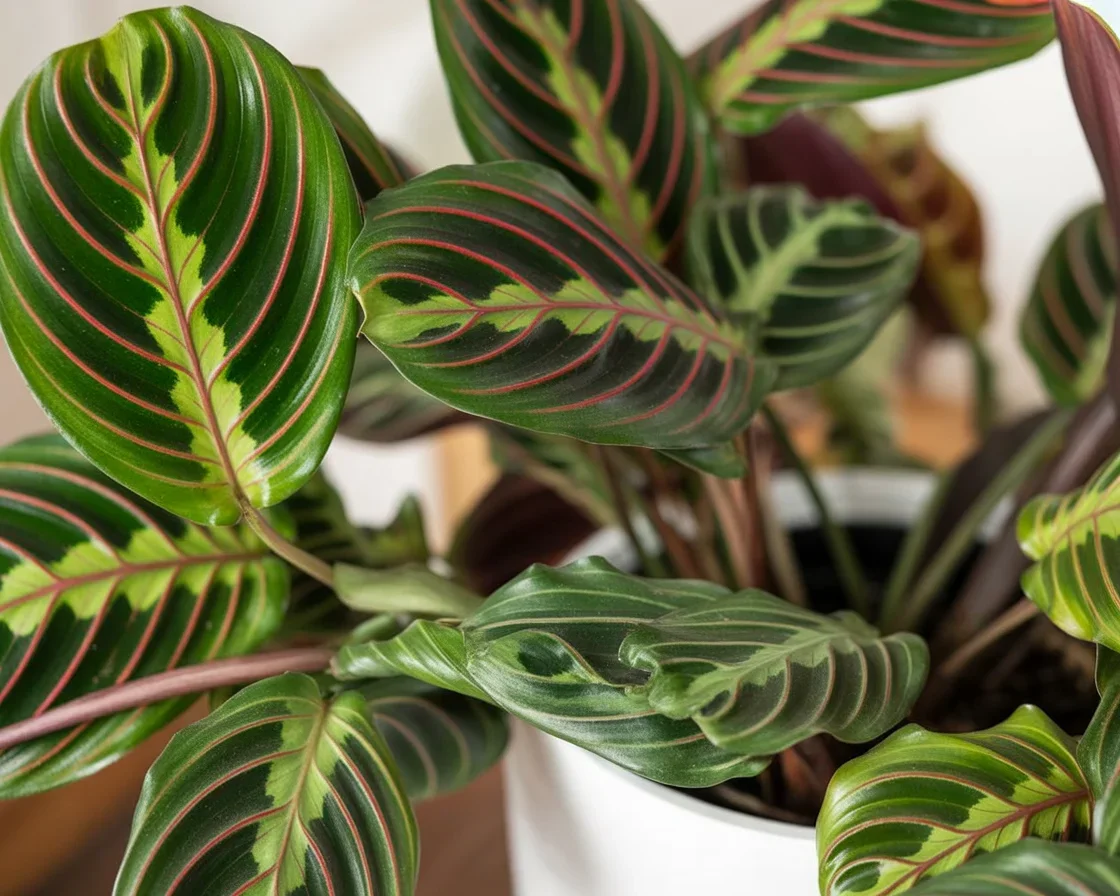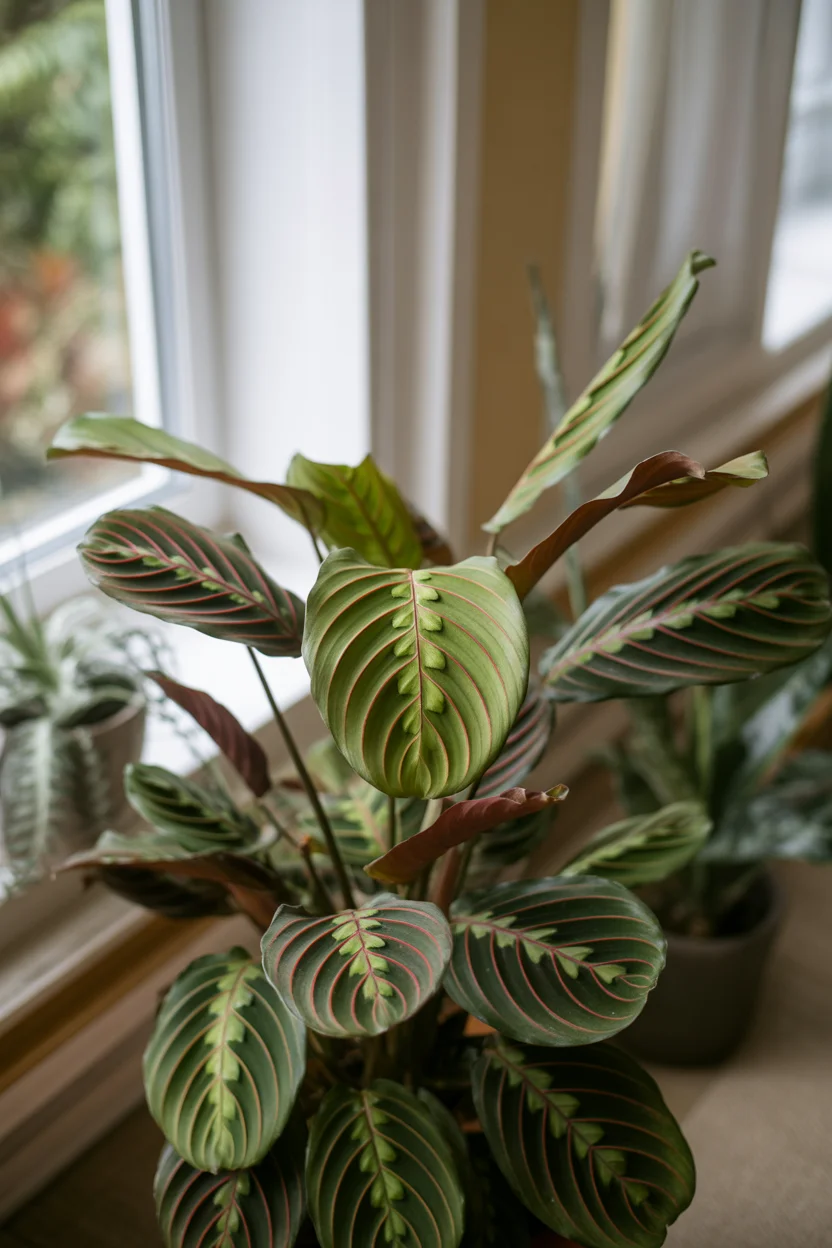Ever wrestle with a praying plant that just won’t—well, pray? I’ve been there. Those leaves that curl up at night, like little hands in prayer, are supposed to be easy. Yet sometimes, the brown edges and droopy greens make me second-guess this reputation. If you’ve seen these beauties on lists of the most popular house plants or bright indoor picks, and your plant still isn’t thriving, let’s swap stories. Here’s every lesson I learned about prayer plant TLC so yours (and mine) can finally show off.
Table of Contents
Praying Plant Care
So, first things first—prayer plants like it humid and never bone dry. My apartment gets Sahara-dry in winter, which almost killed mine (no joke, I panicked). Try to mist when you can or sit your pot on a tray of pebbles with water. These plants are real drama queens if humidity drops.
Regular watering is key, but “regular” is about when the top inch of soil feels dry—poke your finger in there, no fancy gadgets needed. I use filtered water (no hard science, just heard it’s better than tap for them). One time, my plant dropped half its leaves after I slacked on watering. Unforgettable.
Don’t forget to feed during the spring and summer with a weak houseplant fertilizer. Skip winter—these guys like to nap.
You’ll definitely want to check out some shade-loving container choices if your space is kinda dim, and maybe even see what’s up with creative indoor planting ideas for more inspiration. 
Types of Prayer Plants
It surprised me how many varieties there are, honestly. The most famous? Maranta leuconeura—classic dark green leaves with pink stripes. But there are so many cousins out there.
Some have bold, red veins (Red Prayer Plant), and others toss in spots or wild patterns (like Lemon Lime or Kim). Not all of them behave exactly the same, but most need similar care. I learned this while hunting for a purple one after seeing a gorgeous photo (obsessed for weeks).
Want to add pop to your collection? Scope out top purple plants or mingle them with other shade-loving favorites. They all play nicely together, I promise. 
Pruning Prayer Plants
Now, I used to think pruning was only for those fussy plants or for people with, like, greenhouse levels of knowledge. But trust me, prayer plants appreciate a good haircut! It helps them stay bushy and not all leggy and sad.
Use sharp, clean scissors (seriously, clean them, or you might start a fungus party), and just snip right above a leaf node. I don’t go wild—only a few stems at a time. If you snip yellowing leaves or unruly bits, not only does it tidy things up, it encourages fresh growth.
Oh, and don’t toss the cuttings—stick them in water, and you can get new prayer plants (I’ve given a few away as gifts, and it feels like sharing little pieces of plant magic). If you like the idea, see what other plants you can grow in water too!
“I started cutting back my struggling prayer plant one winter and was shocked—by spring, it exploded with new leaves. Game changer!”
– Jamie, plant-obsessed neighbor

Common Problems with Praying Plants
Here’s where I sigh—prayer plants, for all their beauty, don’t always play nice. Leaves turning brown or curling? Classic sign the humidity is too low. Random yellow leaves? Sometimes, it’s just old age, but overwatering likes to sneak up on you, too.
Pests are rare but watch for spider mites when your plant’s dusty or stressed (they look like tiny specs moving, which frankly creeped me out at first). Keep your plant’s leaves clean, and maybe give a gentle shower in the sink every month.
If you’re always forgetting to water, maybe try low-drama plants like indoor bamboo. Prayer plants can forgive, but only for so long.
Here’s a quick reference I wish I had from day one:
| Problem | What it Looks Like | Cause | Quick Fix |
|---|---|---|---|
| Browning leaf edges | Crispy brown on tips | Low humidity | Increase moisture/mist often |
| Yellow leaves | Pale or floppy leaves | Overwatering/poor drainage | Let soil dry, check drainage |
| Curled leaves | Leaves roll inward | Dry air or underwatering | Mist more, water consistently |
| Pests | Fine webbing/small bugs | Spider mites or aphids | Shower leaves/use neem oil |
Diseases
Honestly, you don’t want to meet most prayer plant diseases (gross). Fungal issues like leaf spot or root rot are the worst offenders. These usually come from too much moisture or letting water sit on the leaves overnight (guilty as charged one rainy week—never again).
Always use pots with holes (seriously, I lost one plant to a “pretty but deadly” pot with no drainage). If you spot black spots or mushy stems, trim off the bad stuff, switch to fresh soil, and cross your fingers. Clean those scissors, too.
If you catch problems early, you can usually save your plant. Otherwise, well, chalk it up as experience. Plants teach us patience. And sometimes heartbreak, but mostly patience.
Where is the best place to put a prayer plant?
Let’s keep this one easy. Prayer plants don’t love hot sun blasting down on them. A north or east-facing window is perfect—mine’s on a desk that gets morning light and gentle shade the rest of the day. If all you’ve got is a south window, hang a sheer curtain or scoot the plant back a bit.
Some folks line these up in bathrooms or even on bookshelves, since they look lush anywhere that’s not full-on sunshine. Pair them with other corner-friendly green picks. Trust me, it gives your space a five-star restaurant vibe.
How do you care for a prayer plant?
Alright, bracing for bullet mode—let’s keep it quick:
- Water only when the top inch of soil is dry.
- Humidity matters way more than you think, so mist, group plants, or use pebbles and water under the pot.
- Fertilize once a month in spring/summer; skip fall/winter.
- Wipe dust off the leaves every now and then.
If you wonder what else thrives with minimal sunlight, see these container gardening winners for fresh ideas!
Do prayer plants like sun or shade?
This was confusing for me at first. The answer is shade—with a splash of bright, indirect light if you want lush, wild leaf colors. I once plopped mine in a window and sunburned it! Seriously, the leaves went brown within a few hours. I nearly cried.
So, if you’ve got a shaded nook but with some daylight sneaking in, your prayer plant will thrive. Too little sun? It’ll stretch and the colors may fade, but it’s easier to fix than sunburn. Err on the side of shade, always.
Give Praying Plants a Try—You’ll Love the Journey
If you’ve made it this far, you know prayer plants are moody but so worth it. They’re forgiving with a splash of drama tossed in, and there’s always something new to learn from them. Check out solid extra guides like Prayer Plant: Care & Growing Guide for even more nitty-gritty. Grab one, start experimenting, and have fun—before you know it, your place will look like a jungle, and all your plant friends will be jealous (good luck keeping them from coming over for “just one more cutting”). 
FAQ about Praying Plant
Why are my prayer plant’s leaves folding up during the day?
That’s normal at night (they pray, after all), but if it happens all day, it’s probably thirsty or needs more humidity.
Can I propagate a prayer plant from just a leaf?
Nope, you need to cut a stem with a node. Pop it in water until it roots. Super easy!
How often should I repot my prayer plant?
Every one or two years is fine, or when you see roots crowding out of the bottom. Spring’s the best time.
Are prayer plants safe for pets?
Yes, they are non-toxic to cats and dogs. Still, I wouldn’t let Fluffy snack on them!
What if my plant gets leggy?
Try pruning above the leaf nodes. It’ll bush out fast if you give it good light and care.

